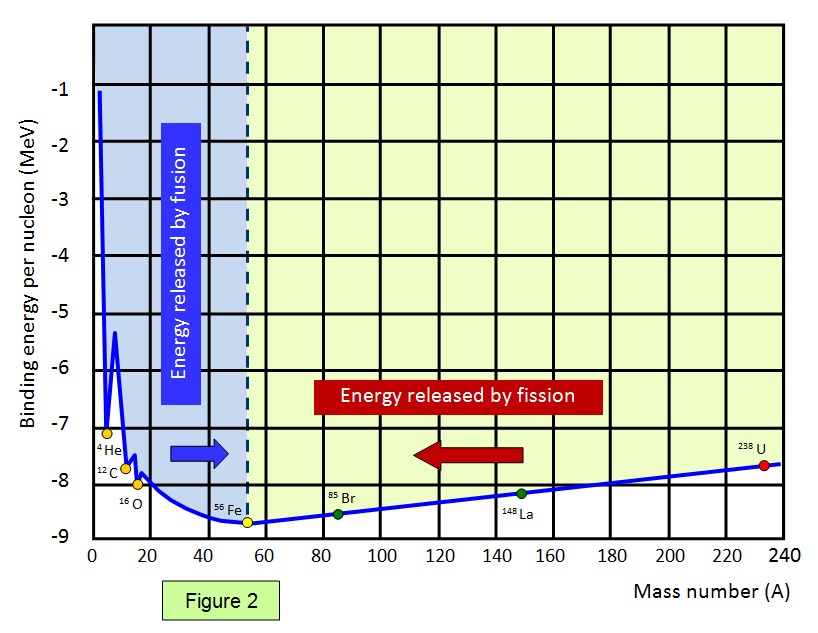Why does the binding energy per nucleon increase during nuclear fission and nuclear fusion?
1 Answer
Because both processes make the nucleus more stable.
Explanation:
Nuclear bonds, like the more familiar chemical bonds, require energy input to break them. This means energy is released when they are formed, the energy in stabilising nuclei is derived from the ‘mass defect’. This is the amount of mass difference between a nucleus and the free nucleons used to make it.
The graph you have probably seen shows nuclei around Fe-56 being the most stable, but shows iron at the top. If we reverse this, showing energy as being negative, it is much easier to visualise each nucleus as sitting in a potential well, and to understand why the energy per nucleon decreases (from either direction) towards iron.

Hope you’ll look at the website the diagram was taken from too - it’s very useful!

